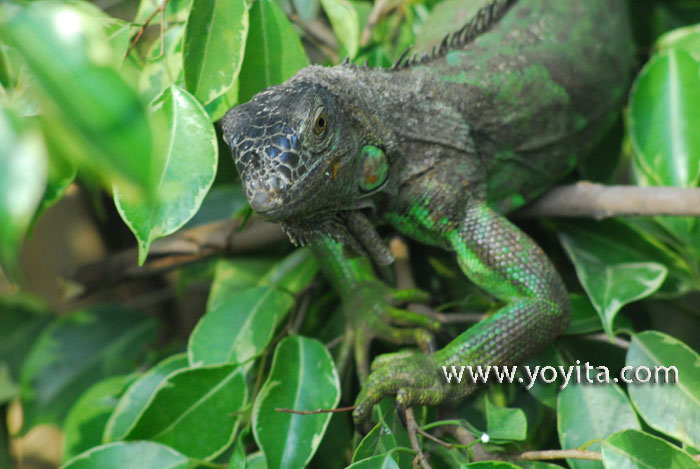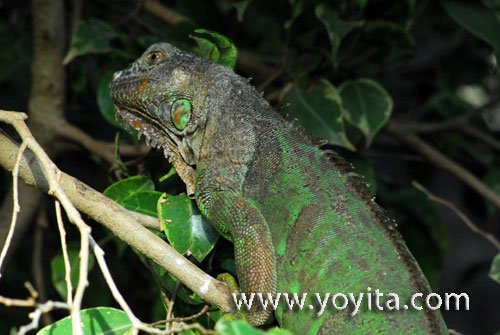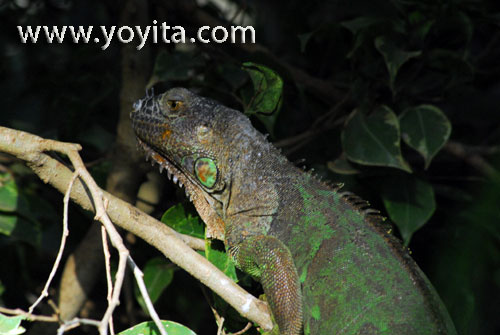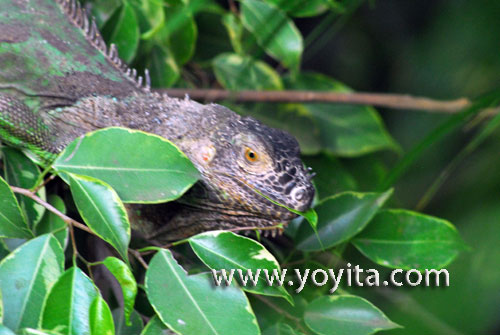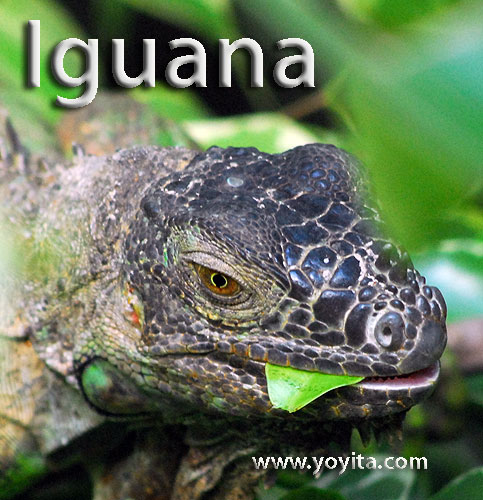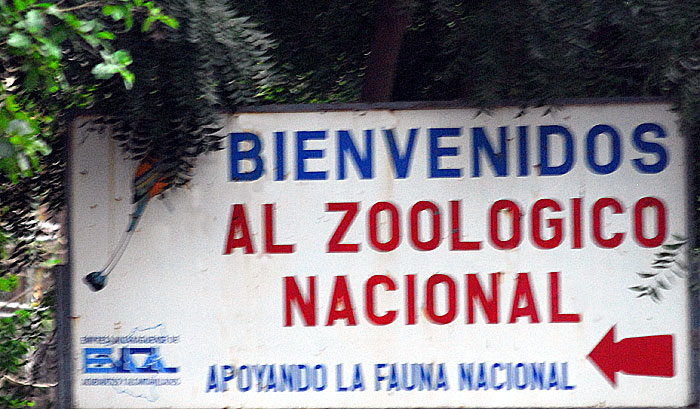Iguana
Scientific classification
Kingdom: Animalia
Phylum: Chordata
Class: Sauropsida
Order: Squamata
Suborder: Sauria
Family: Iguanidae
Genera
Amblyrhynchus
Brachylophus
Conolophus
Ctenosaura
Cyclura
Dipsosaurus
Iguana
Sauromalus
Frost et al classification of iguanas
Family Iguanidae
Genus Amblyrhynchus
Genus Brachylophus
Genus Conolophus
Genus Ctenosaura
Genus Cyclura
Genus Dipsosaurus
Genus Iguana
Genus Sauromalus
Genus Armandisaurus (extinct)
Genus Lapitiguana (extinct)
Genus Pumila (extinct)
Traditional classification
Family Iguanidae
Subfamily Corytophaninae: casquehead lizards
Subfamily Crotaphytinae: collared and leopard lizards
Subfamily Hoplocercinae: wood lizards, clubtails
Subfamily Iguaninae: iguanas and spinytail iguanas
Subfamily Leiocephalinae
Subfamily Leiosaurinae
Subfamily Liolaeminae
Subfamily Oplurinae: Madagascar iguanids
Subfamily Phrynosomatinae: earless, spiny, tree, side-blotched and horned lizards
Subfamily Polychrotinae: anoles
Subfamily Tropidurinae: neotropical ground lizards
Species: 650
Length:
3.9 inches (10 centimeters) to 6.6 feet (2 meters), depending on species
Incubation of eggs:
65 to 115 days, depending on species
Number of eggs:
average 20 to 40 per clutch
Size at hatching:
7.9 inches (20 centimeters)
Age of maturity:
3 years
Range: southeastern Canada to Central and South America, the Gal�pagos Islands, some Caribbean islands (such as Cuba, Jamaica, and the Anegadas), Fiji in the South Pacific, and Madagascar, off the east coast of Africa.
Iguanas as a whole are regarded as omnivores, but usually tend to consume plants, mainly leaves and fruits. Sometimes iguanas (especially younger ones) will eat eggs, insects and other smaller vertebrates. Note, however, that the feeding of green iguanas in captivity is a separate issue � although the lizards will eat animal food if presented with it, it has been argued that systematic consumption of animal protein is likely to result in severe health problems and possible premature death
Longevity:
10 to 15 years in the wild. Wel cared in captivity 20 + years.
Habitat:
Found in habitats from tropical and subtropical forests to deserts and along the seashore.
Some iguanas enjoy living in trees, such as the green iguanas of Central and South America.
They live generally in lower altitudes in areas near water sources, such as rivers or streams and spend most of their time high in the forest canopy, about 40-50 feet above the ground.
Green iguanas tend to live alone, but may be seen in groups occasionally in good sunny basking spots. Iguanas lay many eggs at a time (about 50), in holes inthe ground called burrows. They also dig pretend burrows to confuse any animals that may be looking for eggs to eat. After female iguanas lay the eggs, they leave them and do not return. When iguana babies hatch, they grow up without care from their parents. Green iguanas lay many eggs, but only 3-10 babies actually survive to be adults. It takes green iguana eggs about 8-10 weeks to hatch, then takes baby iguanas about 2 years to become mature adults.
Survival Threat :
The green iguana is also threatened by habitat destruction. The green iguana is also a victim of the pet industry. Many people in the United States and elsewhere want a green iguana for a pet, so there is a big demand for their capture. Some populations of Central and South America hunt the green iguana for food.
Dentition:
An Iguana can have from 60 to over 100 teeth which unlike ours are continually being replaced, also as the Iguana grows in size and the jaws lengthen then more teeth can be added behind the ones already in place
Iguanas as pets:
It is illegal to own iguanas in some cities and states in the United States, including Washington D.C., New York City and Hawaii.
Iguanas are susceptible to MBD (Metabolic bone disease) due to their specific diet/light/environment needs MBD is an improper calcium to phophorus ratio in the body.
These are the signs and symptoms of Metabolic Bone disease:
bowed, or swollen legs, or bumps on the long bones of the legs
arched spine or bumps along bones of spine
softening and swelling of the jaw (bilateral) - sometimes called "rubber jaw"
receded lower jaw
in turtles, softening of the carapace or plastron (the shell)
tremors
jerky movements-twitching in the muscles of the legs and toes
lameness
anorexia
constipation
fractures of the bones due to bone weakness
lethargy
weakness and even partial paralysis (sometimes unable to lift body off ground)
| Iguana size-age Table |
| Age |
snout-vent length |
snout-tail length
|
Weight lbs |
| Hatchling |
2.5-3.5
|
6-9
|
90 gm |
| 1 |
8-9
|
20-27
|
1-1.5
|
| 2 |
11-12
|
28-36
|
2-4
|
| 3 |
12-1 |
30-42
|
4-6
|
| 4 |
14-16
|
35-48
|
5-8
|
| 5 |
18-20
|
45-60
|
10-15
|
| 6 |
20-22
|
50-66
|
14-18
|
| 7 |
20-24
|
50-72
|
15-20
|
|


